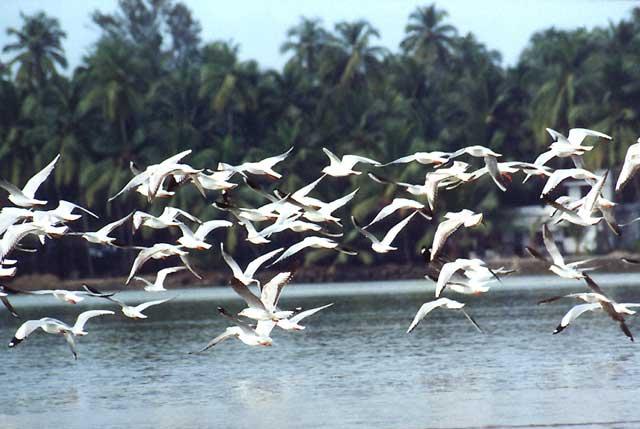The World Migratory Bird Day 2020 will be celebrated by people across the world on Saturday, October 10 with the theme “Birds Connect Our World”.

The theme, it was gathered, highlights the importance of conserving and restoring the ecological connectivity and integrity of ecosystems that support the natural movements of migratory birds and that are essential for their survival and well-being.
The UN-led campaign, which aims to raise awareness of migratory birds and the importance of international cooperation to conserve them, is organised by a collaborative partnership among two UN treaties – the Convention on Migratory Species (CMS) and the African-Eurasian Migratory Waterbird Agreement (AEWA) – and the Colorado-based non-profit organisation, Environment for the Americas (EFTA).
On their journeys across the planet, birds face numerous threats such as habitat loss and illegal hunting as well as other threats such as poisoning, collision with power lines, wind turbines and glass-covered buildings and climate change. Migratory birds are also highly dependent on a network of sites along their migration routes for breeding, feeding, resting and overwintering.
“Migratory birds connect us to nature, and they connect us to one another. Their survival depends on each of us – on each country and each person along their migration path – taking action to conserve and restore the habitats and ecosystems that they need to survive,” said Amy Fraenkel, Executive Secretary of CMS. “Conserving migratory birds requires cooperation and coordination along the entire flyway between countries and across national boundaries. Only by working together can we make sure they will survive and thrive.”
Approximately one in five of the world’s 11,000 bird species migrate, some covering enormous distances, with the Bar-tailed Godwit, for instance, flying 11,680 kilometres between Alaska and New Zealand. Migratory birds require a chain of sites and appropriate habitats, such as wetlands, coastal areas, forests and grasslands to support them during their life cycle.
“Despite the challenges that humankind must currently face, the cycles and rhythms of nature, including those of migratory birds are continuing on their normal course,” said Jacques Trouvilliez, Executive Secretary of AEWA.
“But the crisis we are facing should act as a wake-up call as the roots of the pandemic can be found in the deterioration of biodiversity. We are celebrating World Migratory Bird Day only days after world leaders at the UN Summit on Biodiversity committed their countries to greater action for nature. Birds not only connect sites beyond national borders, they also connect us. Let us take into account this essential dimension of connectivity to build a healthier, more environmentally responsible and more liveable world for us all,” added Trouvilliez.
Increased global action through multilateral environment treaties such as the Convention on Migratory Species (CMS) and the African-Eurasian Waterbird Agreement (AEWA) is essential to protect migratory birds on their international journeys.
“World Migratory Bird Day is a call to action and a reminder that we are connected by birds’ journeys. Though we may be separated by miles and geography, birds connect us locally and globally,” said Susan Bonfield, Executive Director of EFTA. “Our unified voices for bird conservation bring us together in ensuring that our planet is healthy for these long-distance travellers and for us.”
Virtual events and a wave of online interactions are expected to take place in countries around the world in celebration of World Migratory Bird Day, with educational programmes being offered online by numerous organisations including schools, parks, zoos, forests, wildlife refuges, wetlands centres, museums and libraries.
